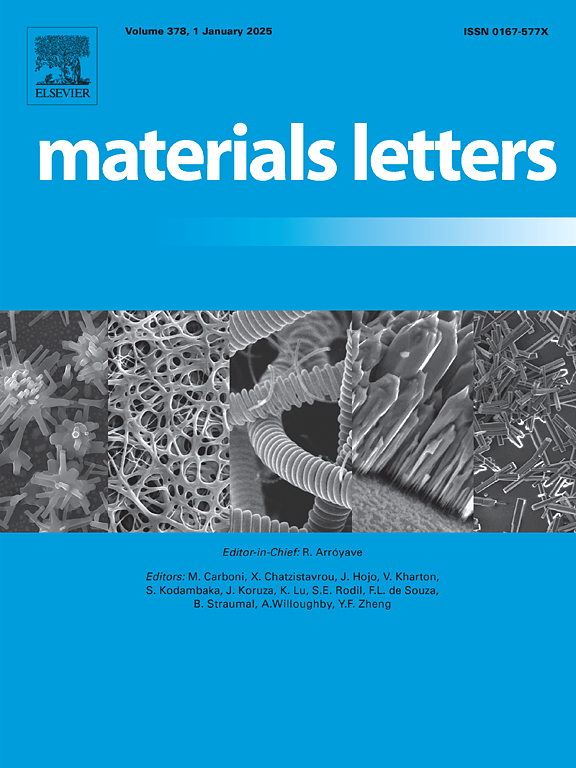Enhanced photoluminescence of CdTe/SiO2 quantum dots: Impact of ambient conditions and laser excitation regime on surface trap passivation
IF 2.7
4区 材料科学
Q3 MATERIALS SCIENCE, MULTIDISCIPLINARY
引用次数: 0
Abstract
We study the photoluminescence properties of CdTe/SiO2 spherical quantum dots (QDs) under different ambient conditions and excitation regimes. Our findings reveal a significant increase in photoluminescence intensity over time, which we attribute to the adsorption of oxygen and water molecules at QD interfaces resulting in trap passivation. This enhancement is more pronounced under continuous laser excitation compared to periodic on/off excitation, suggesting that continuous excitation facilitates more efficient surface chemistry and trap passivation. The proposed mechanism involving adsorption of oxygen and water is supported by the fact that photoluminescence intensity enhancement at continuous irradiation is smaller at evacuation. Additionally, we observe that the average luminescence lifetime decreases with time at continuous laser irradiation in between the decay measurements, indicating improved electron-hole recombination efficiency due to trap passivation. These insights into the photoluminescence behavior of CdTe/SiO2 QDs under different ambient conditions and excitation regimes contribute to the understanding of QD photostability and the development of QD-based devices.
CdTe/SiO2量子点的增强光致发光:环境条件和激光激发方式对表面阱钝化的影响
研究了CdTe/SiO2球形量子点(QDs)在不同环境条件和激发机制下的光致发光特性。我们的研究结果表明,随着时间的推移,光致发光强度显着增加,我们将其归因于氧和水分子在QD界面的吸附导致陷阱钝化。与周期性开/关激发相比,这种增强在连续激光激发下更为明显,这表明连续激发有助于更有效的表面化学和陷阱钝化。连续照射下的光致发光强度增强在疏散时较小,这一事实支持了所提出的涉及氧和水吸附的机制。此外,我们观察到在连续激光照射下的平均发光寿命随着时间的推移而减少,这表明由于陷阱钝化提高了电子-空穴复合效率。这些关于CdTe/SiO2量子点在不同环境条件和激发机制下的光致发光行为的见解有助于理解量子点光稳定性和基于量子点的器件的开发。
本文章由计算机程序翻译,如有差异,请以英文原文为准。
求助全文
约1分钟内获得全文
求助全文
来源期刊

Materials Letters
工程技术-材料科学:综合
CiteScore
5.60
自引率
3.30%
发文量
1948
审稿时长
50 days
期刊介绍:
Materials Letters has an open access mirror journal Materials Letters: X, sharing the same aims and scope, editorial team, submission system and rigorous peer review.
Materials Letters is dedicated to publishing novel, cutting edge reports of broad interest to the materials community. The journal provides a forum for materials scientists and engineers, physicists, and chemists to rapidly communicate on the most important topics in the field of materials.
Contributions include, but are not limited to, a variety of topics such as:
• Materials - Metals and alloys, amorphous solids, ceramics, composites, polymers, semiconductors
• Applications - Structural, opto-electronic, magnetic, medical, MEMS, sensors, smart
• Characterization - Analytical, microscopy, scanning probes, nanoscopic, optical, electrical, magnetic, acoustic, spectroscopic, diffraction
• Novel Materials - Micro and nanostructures (nanowires, nanotubes, nanoparticles), nanocomposites, thin films, superlattices, quantum dots.
• Processing - Crystal growth, thin film processing, sol-gel processing, mechanical processing, assembly, nanocrystalline processing.
• Properties - Mechanical, magnetic, optical, electrical, ferroelectric, thermal, interfacial, transport, thermodynamic
• Synthesis - Quenching, solid state, solidification, solution synthesis, vapor deposition, high pressure, explosive
 求助内容:
求助内容: 应助结果提醒方式:
应助结果提醒方式:


